The Crime Club was an imprint of the Doubleday publishing company, which later spawned a 1946-47 anthology radio series, and a 1937-1939 film series.
Naomi Annie Hocking Messer, known as Anne Hocking and nicknamed "Mona," was an English crime writer, best remembered for her detective stories featuring Chief Superintendent William Austen.
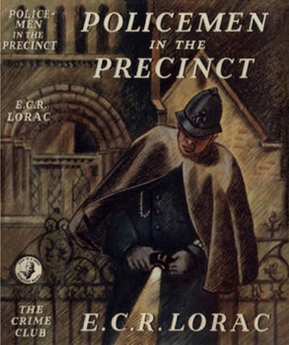
Policemen in the Precinct is a 1949 detective story by E.C.R. Lorac, the pen name of the British writer Edith Caroline Rivett. It was the thirty third entry in her long-running series featuring Chief Inspector MacDonald of Scotland Yard. It was published in the United States by Doubleday using the alternative title And Then Put Out the Light.

These Names Make Clues is a 1937 detective novel by E.C.R. Lorac, the pen name of the British writer Edith Caroline Rivett. It was the twelfth entry in her long-running series featuring Chief Inspector MacDonald of Scotland Yard. It was written shortly after Lorac had been elected as a member of the Detection Club, and was likely influenced by her experiences there. Originally published by Collins Crime Club, it was reissued in 2021 by the British Library Publishing as part of a group of crime novels from the Golden Age of Detective Fiction.
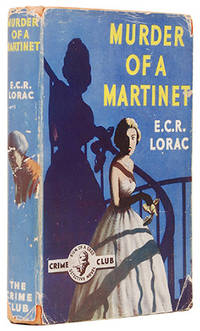
Murder of a Martinet is a 1951 detective novel by E.C.R. Lorac, the pen name of the British writer Edith Caroline Rivett. It is the thirty fifth in her long-running series featuring Chief Inspector MacDonald of Scotland Yard. It was published in the United States by Doubleday under the alternative title of I Could Murder Her.
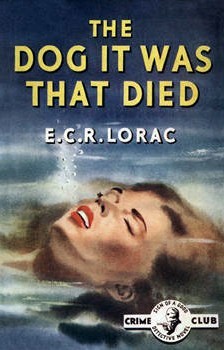
The Dog It Was That Died is a 1952 detective novel by E.C.R. Lorac, the pen name of the British writer Edith Caroline Rivett. It is the thirty sixth in her long-running series featuring Chief Inspector MacDonald of Scotland Yard, one of the more conventional detectives of the Golden Age of Detective Fiction. It was published by the Collins Crime Club.
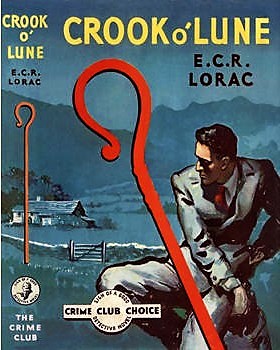
Crook O'Lune is a 1953 detective novel by E.C.R. Lorac, the pen name of the British writer Edith Caroline Rivett. It is the thirty eighth in her long-running series featuring Chief Inspector MacDonald of Scotland Yard, one of the more orthodox detectives of the Golden Age of Detective Fiction. It was published in the United States by Doubleday under the alternative title of Shepherd's Crook.
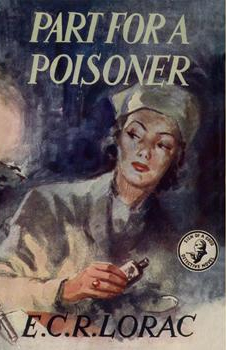
Part for a Poisoner is a 1948 detective novel by E.C.R. Lorac, the pen name of the British writer Edith Caroline Rivett. It is the thirty first in her long-running series featuring Chief Inspector MacDonald of Scotland Yard, one of the more conventional detectives of the Golden Age of Detective Fiction who relies on standard police procedure to solve his cases. It was published in the United States by Doubleday under the alternative title of Place for a Poisoner.

Death Before Dinner is a 1948 detective novel by E.C.R. Lorac, the pen name of the British writer Edith Caroline Rivett. It is the thirtieth in her long-running series featuring Chief Inspector MacDonald of Scotland Yard, one of the detectives of the Golden Age of Detective Fiction who relies on standard police procedure to solve his cases. It was published in the United States by Doubleday under the alternative title of A Screen for Murder.

Death of an Author is a 1935 detective novel by E.C.R. Lorac, the pen name of the British writer Edith Caroline Rivett. It is a rare standalone book by Lorac, not featuring Chief Inspector MacDonald of Scotland Yard who appeared in a lengthy series of novels during the Golden Age of Detective Fiction. It was her final novel published by Sampson Low before she switched to the more prestigious Collins Crime Club with whom she remained for the rest of her career.

Crime Counter Crime is a 1936 detective novel by E.C.R. Lorac, the pen name of the British writer Edith Caroline Rivett. It is the ninth in her long-running series featuring Chief Inspector MacDonald of Scotland Yard, a Golden Age detective who relies on standard police procedure to solve his cases. It was her first novel published by Collins Crime Club after switching from Sampson Low, partly on the success of the previous entry in the series The Organ Speaks. Collins then published the remainder the series.

Murder in Crown Passage is a 1937 detective novel by the British writer Cecil Street, writing under the pen name of Miles Burton. It is the sixteenth in a series of books featuring the amateur detective Desmond Merrion and Inspector Arnold of Scotland Yard. Street was one of the most prolific authors of the Golden Age of Detective Fiction. It was published in the United States by Doubleday the same year under the alternative title The Man with the Tattooed Face. As often in the series, the setting is in rural England.
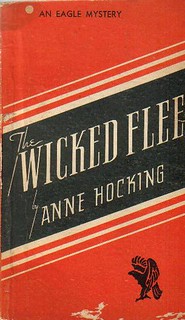
The Wicked Flee is a 1940 mystery crime novel by the British writer Anne Hocking. It was the second novel in a long-running series featuring her detective character Chief Inspector William Austen of Scotland Yard.

Old Mrs. Fitzgerald is a 1939 detective novel by the British writer Anne Hocking. It was the first novel in her long-running series featuring Chief Inspector William Austen of Scotland Yard. Austen was one of a large number of investigators operating during the Golden Age of Detective Fiction. It was originally serialised in The Sunday Post. Reviewing the novel for The Observer Maurice Richardson wrote a favourable review..
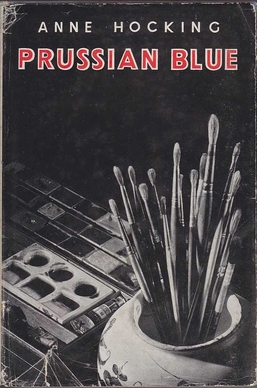
Prussian Blue is a 1947 mystery crime novel by the British writer Anne Hocking. It was her ninth in the series featuring Chief Superintendent William Austen of Scotland Yard. The title refers to Prussian Blue, a blue pigment used by artists. It was published in the United States by Doubleday under the alternative title The Finishing Touch.

The Vultures Gather is a 1945 mystery detective novel by the British writer Anne Hocking. It was published in London by Geoffrey Bles. Written during the Golden Age of Detective Fiction, it is the seventh in her series featuring Chief Superintendent William Austen of Scotland Yard.
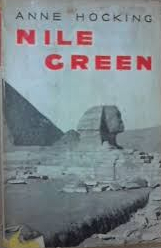
Nile Green is a 1943 mystery detective novel by the British writer Anne Hocking. Written during the Golden Age of Detective Fiction, it is the fifth in her long-running series featuring Chief Superintendent William Austen of Scotland Yard. It was published in the United States by Doubleday under the alternative title Death Loves a Shining Mark.

One Shall Be Taken is a 1942 detective novel by the British writer Anne Hocking. It was published in London by Geoffrey Bles. Written during the Golden Age of Detective Fiction, it is the fourth entry in her series featuring Chief Superintendent William Austen of Scotland Yard.

Death Disturbs Mr. Jefferson is a 1950 mystery detective novel by the British writer Anne Hocking. It was the eleventh entry in her series featuring Chief Inspector William Austen of Scotland Yard, one of the many investigators during the Golden Age of Detective Fiction.It was published in the United States by Doubleday.

Mediterranean Murder is a 1951 mystery detective novel by the British writer Anne Hocking. Written during the Golden Age of Detective Fiction, it was the twelth entry in her series featuring Chief Inspector William Austen of Scotland Yard. It was published in the United States by Doubleday under the alternative title Killing Kin.


















